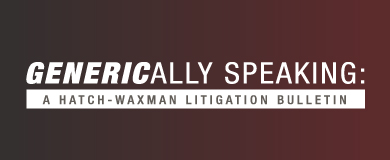- Acumen Powered by Robins Kaplan LLP®
- Affirmative Recovery
- American Indian Law and Policy
- Antitrust and Trade Regulation
- Appellate Advocacy and Guidance
- Business Litigation
- Civil Rights and Police Misconduct
- Class Action Litigation
- Commercial/Project Finance and Real Estate
- Corporate Governance and Special Situations
- Corporate Restructuring and Bankruptcy
- Domestic and International Arbitration
- Health Care Litigation
- Insurance and Catastrophic Loss
- Intellectual Property and Technology Litigation
- Mass Tort Attorneys
- Medical Malpractice Attorneys
- Personal Injury Attorneys
- Telecommunications Litigation and Arbitration
- Wealth Planning, Administration, and Disputes
Acumen Powered by Robins Kaplan LLP®
Ediscovery, Applied Science and Economics, and Litigation Support Solutions
-
June 1, 2022Chambers USA Recognizes Five Robins Kaplan Practice Groups And 17 Lawyers In 2022 Guide
-
June 1, 2022Seasoned Attorney Joins Firm’s Business Litigation Group
-
May 26, 2022Shira Shapiro Named Woman of Promise By The Pearl Society
-
June 3, 202219th Annual Advanced Insurance Law
-
June 9, 2022Building Your Brand: Perspectives and Insights from a Diverse Bar
-
June 10, 2022LGBTQ Legal Services: Transgender Name Change Clinic
-
May 24, 2022Briefly: Seeking Fees and Costs While on Appeal
-
May 19, 202211th Circ. Ban On Service Awards May Inhibit Class Actions
-
May 13, 2022Trademark Applications and the Murky Waters of Subject Matter Jurisdiction
-
June 2, 2022Sandberg Stepping Down as Meta COO After 14 Years
-
June 1, 2022Markets Revert to Recent Form as Pessimism Takes Hold
-
May 27, 2022Unexpectedly Strong Retail Sales Pull Markets Back from the Brink
Find additional firm contact information for press inquiries.
Find resources to help navigate legal and business complexities.
UCB, Inc. v. Actavis Labs. UT, Inc.
Neupro® (rotigotine)
March 26, 2021

Case Name: UCB, Inc. v. Actavis Labs. UT, Inc., Civ. No. 19-474-KAJ, 2021 WL 1880993 (D. Del. Mar. 26, 2021) (Jordan, J.)
Drug Product and Patent(s)-in-Suit: Neupro® (rotigotine); U.S. Patent No. 10,130,589 (“the ’589 patent”)
Nature of Case and Issue(s) Presented: The ’589 patent claimed solid dispersions of certain ratios of amorphous rotigotine free base and polyvinylpyrrolidone (“PVP”) for use in Transdermal Therapeutic Systems (“TTSs”), i.e. patches that could be applied to a person's skin for the delivery of a drug. The ’589 patent claimed weight-percentage ratios of between 9:4 and 9:6 of rotigotine to PVP. TTSs were used to treat Parkinson’s Disease and Restless Leg Syndrome. Here, Plaintiffs marketed patches having a 9:4 ratio under the brand name Neupro. After Actavis filed an ANDA seeking approval to sell a generic version of Neupro, Plaintiff filed suit alleging infringement of the ’589 patent. Actavis countered that the ’589 patent was invalid for anticipation, obviousness, and lack of a written description. Actavis also stipulated to infringement if the ’589 patent were held not invalid. After a three-day bench trial, the court found that the ’589 patent was invalid for anticipation and obviousness, but found that Actavis had not shown by clear and convincing evidence that the ‘589 patent lacked sufficient written description.
Why Actavis Prevailed: Plaintiff previously marketed a version of Neupro that was identical in every respect except it contained a weight ratio of 9:2 rotigotine to PVP. These earlier patches were recalled, due to the rotigotine in them crystallizing when stored at room temperature. Actavis argued that several prior-art patents owned by Plaintiffs, referred to as the “Muller Patents,” described an identical invention to that of the ’589 patent and claimed a range of ratios of rotigotine to PVP (9:1.5 to 9:5) that significantly overlaped with the ’589 patent’s claimed range (9:4 to 9:6). Moreover, Actavis contended that during the course of treatment with an earlier Neupro patch with its 9:2 ratio of rotigotine to PVP, the ratio of the patch would decrease as rotigotine transferred into the skin, such that, at a certain point during therapy, the patch would embody ratios claimed by the ’589 patent. Actavis argued that the Muller Patents, other prior art, and the earlier Neupro patches, taught examples of identical TTSs containing 9:2 and 9:3 weight ratios of rotigotine to PVP. As such, a POSITA would have known to slightly increase the amount of PVP in those examples to add stability to the patch, given the well-known: (i) stabilizing effect of PVP on amorphous rotigotine, (ii) the fact that only small amounts of crystallization were occurring in original Neupro, and (iii) the fact that crystallization was happening only at room temperature and not in cold storage.
The court agreed with Actavis, finding that the Muller Patents anticipated the asserted claims of the ’589 patent as they taught and claimed the ranges and elements of the asserted claims, and that a POSITA reading the Muller Patents would readily envisage the claimed ratios. Because the asserted claimed ranges overlapped with the Muller Patents, the court also found there was a presumption of obviousness and that Plaintiff failed to rebut this presumption.
Related Publications
Related News
If you are interested in having us represent you, you should call us so we can determine whether the matter is one for which we are willing or able to accept professional responsibility. We will not make this determination by e-mail communication. The telephone numbers and addresses for our offices are listed on this page. We reserve the right to decline any representation. We may be required to decline representation if it would create a conflict of interest with our other clients.
By accepting these terms, you are confirming that you have read and understood this important notice.
